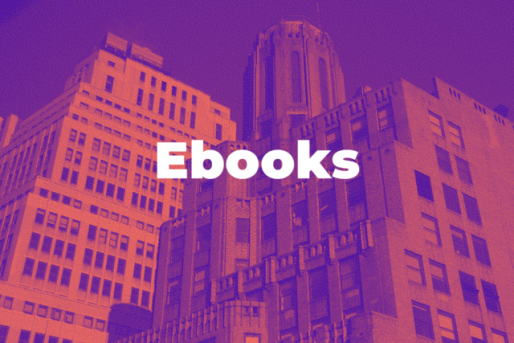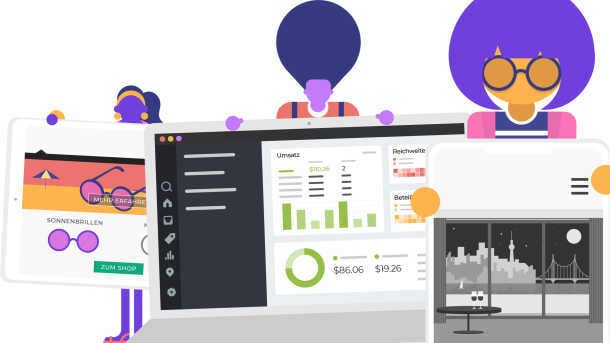Globalization can be a powerful catalyst for many businesses. A key factor to succeeding globally comes down to high-quality communication and translation.
Accurately conveying your brand message and product value to a multilingual audience is crucial for such expansion. It requires more than just passable, generic translations; peoples and cultures are complex. Your content will make the strongest impact when it’s expressed on a familiar, local level that can speak to the nuances of your potential customers.
One word in your language might mean something totally different to someone across the globe when spoken in their different local language. While everyone can agree on the value of accurate translations, producing them is easier said than done.
Traditional business translation services can be time-consuming and costly. There’s also the risk that the translated materials don't fully or accurately convey your intended message to a local audience. These challenges can hurt scalability and sales potential.
Thankfully, there's a fast, affordable, and accurate way to translate your business content worldwide. We’ll explore the value of business translations and how you can grow your company with improved brand messaging, communications, and localized customer relationships.
 Business translations focus on connecting with your customers, teams, and partners on a local level.
Business translations focus on connecting with your customers, teams, and partners on a local level.
Generic translation vs. business translation
So what’s the difference between an average translation and one crafted for ultimate business impact? It starts with your audience.
Generic translations often focus on the first layer of language transformation.
For example, you want to translate a piece of content from English to Spanish. Done at the most basic level, a word-for-word technical translation may or may not express what you intended.
Unfortunately, many companies adopt this method. While generic translations are helpful for personal situations like basic communication during travel or getting a general idea of the source content, they fall short of business standards. After all, companies have higher stakes.
Your business needs to sell and market your product effectively, maintaining the same brand voice across local markets and connecting with multilingual customers. You must also communicate with your distributed teams, vital partners, and maybe even governing bodies. Original message intent plays a big role.
That’s where localized business translations come in. Localization includes translations but also incorporates the cultural nuances, histories, and complexities of each person's group, dialect, and location.
When you prioritize world-class business translations, you can communicate your message effectively, grow your market reach and sales, and offer better customer service.
So, how can you get started?
Shaping your business translation strategy
There are fundamental steps to implementing great translations for your business. It’s critical to decide how to implement processes like translation, transcreation, and localization, and how to use data for improvement. Below is how you can start strategizing for improved translations:
1. Use your current content to decide between translation and transcreation
We know that content localization can elevate your business translations. It’s worth considering transcreation as a core element of your approach to multilingual markets.
Translation is more literal, whereas transcreation is a creative process. It involves adapting content from one language to another while maintaining the existing tone, intent, and style. Further, it’s often a reimagining of your content so that it better resonates with a different culture.
Translation and transcreation are both part of the localization process, so you’ll want to consider the best application of each while translating content.
As your business plans to go global, you should assess your current content based on translation quality standards. From there, your team can evaluate the quality of website content or other materials—most content will require an element of transcreation to communicate effectively to local audiences.
2. Set your translation budget and scalability goals
Before the development of the latest translation tools, translation was often expensive. The high costs of dedicated labor and repetitive tasks across multiple markets made it tough to scale globally.
Today, translation is faster, more affordable, and more accurate. Companies can now scale more easily.
To do so, there’s a variety of assets you’ll need to translate effectively. We’ve included some content types below and considerations for each:
- Marketing translations: Your company should be able to communicate its value proposition with the same brand message so that local audiences understand your intended meaning. With the right solutions, marketing teams can create high-quality website translations, ads, marketing campaigns, and more.
- Product translations: You should position and describe your products so that local customers see their value and understand their use cases.
- Customer service translations: When customers contact you or need help, you should be able to support them effectively through communication they understand—and in their cultural context.
- Document translations and internal resources: As you onboard international employees or partners, you should be able to provide the internal business documents, guides, and resources they need in their language or dialect for brand and team alignment.
- Operational translations: Whether it’s legal documents, technical documents, or internal content, you need to communicate details about your company accurately while working with partners and other stakeholders.
Providing a service or product in many local markets requires several translation categories and needs. Your success will depend on the tools and services you choose to scale localization.
3. Understand the role of data-driven translation
You need tools to verify and maintain translation quality, especially as your teams create more global content. This means tracking translation quality and leveraging the data for continuous improvement.
Solutions like Smartling streamline your content workflows and simplify your ability to manage translation at scale. For example, Smartling's workflow analytics illuminate the components of your translation process that positively or negatively impact quality, time to market, and overhead.
Data also helps with improving costs. Companies can stay within budget and track the effectiveness of translation memory over time with cost estimates and translation savings reports.
Accuracy matters, too, and data can generate a holistic view for your teams. Smartling's quality checks provide a real-time view of translation quality. Compare quality and consistency across projects, languages, and translation providers.
You can use these measurements to prioritize steps that will have the most meaningful impact on improving translation quality. For example, suppose one of your translations doesn't have strong visual context. In this case, its quality score is lower. This insight might signal that your team should provide context, such as using computer-assisted translation tools in the process.
These are all essential steps to shaping your business translation process. And while it may seem logical—and convenient—there’s one common pitfall you should avoid. Resist the urge to use your current employees to translate content.
Don’t overburden your bilingual employees with translation
At first, reaching out to your employees who speak a target language makes sense.
Suppose your company is based in Miami, and you need to translate content from English to Spanish. It might seem like an obvious choice to use your employees if most of them speak conversational Spanish or are native speakers.
But if you do this, you face three challenges that may outweigh the convenience:
 Why risk translations that miss the mark? There’s a better way to produce business translations that are faster, more accurate, and more affordable.
Why risk translations that miss the mark? There’s a better way to produce business translations that are faster, more accurate, and more affordable.
1. Just because your team speaks the language doesn't mean they know your audience
In the example above, a Miami-based Spanish speaker isn't going to speak the same dialect and know the cultural nuances of a speaker in Ecuador or Spain.
These countries have rich cultures, histories, customs, communication standards, and expectations that influence how people interpret messages. Spain and Ecuador also have their own languages and dialects that vary from mainstream Spanish, and these affect how different local target markets perceive content.
The Miami Spanish dialect is influenced by U.S. Spanish, English, and the entire Spanish-speaking world. Nuance, word choice, phrasing, and meaning will differ with cultures.
For additional context, it’s like a North American visiting a country like Italy and ordering a latte, thinking it’s an espresso-based coffee with milk. They won’t get a coffee. They’ll get a glass of milk or a confused look—because the Italian word means two different things in different cultures.
That's why it's best to choose a native linguist who’s familiar with the complexities of your specific local audience—whether they speak French, Mandarin Chinese, or any other language or dialect.
2. Not everyone is an expert translator
Native speakers aren’t guaranteed to translate well. You don't want to risk low-quality business content.
Have you ever been to a local event where someone poorly interprets into another language? Technically, the translator might say all the right things, but the meaning isn't quite accurate. When you know both languages, you can catch their mistakes.
The same can be said for translated content. With what results? Your audience may misunderstand your core message or, at the very least, have a very different brand experience than you intended.
Expert translators prevent this by providing accurate, localized translations of your content. They understand how your specific message's meaning, brand voice, and cultural differences all influence the adaptation of the transformed content.
Professional language services are essential for a successful international business translation strategy.
3. Asking your team members to translate leads to burnout
Your team provides incredible value to your company. When you ask them to translate your content, you pull them away from what they do best.
Think of a project you did for the first time that was beyond your skill set. It probably took you 10 times as long as someone more experienced and drained a ton of your energy.
Now, think about the flip side of this. The last thing you want to do is overburden your team. Your business will fare much better in the long run if you concentrate their strongest skills on tasks meant to grow your company and provide excellent customer experiences.
One method to save costs on labor and produce better results is harnessing AI.
You can streamline your business translation process by leveraging AI-powered software and expert linguists for fast, localized translations to scale your company faster and more effectively.
And there’s proof in the pudding—AI-powered human strategies that lead to successful results.
Case study: When a company thrives thanks to effective translation
 Yext experienced great results after implementing a business translation solution. (Source)
Yext experienced great results after implementing a business translation solution. (Source)
When Yext launched its Japanese go-to-market initiative in 2018, it needed to find a way to scale. The company had much to translate, from marketing materials to its web app and entire customer-facing website.
Yext only had one marketer in Japan, so scaling for growth in-house wasn’t viable. The brand needed a way to produce translations and integrate a workflow into its existing software stack.
That’s when Smartling changed Yext’s scalability narrative.
Yext needed the following from Smartling to succeed:
- Linguistic assets like a style guide and glossary
- Centralized assets in Smartling’s translation management system
- Smartling integrations with its website via API
- The ability to develop a large translation memory to boost future translation efficiency
In just two years, Yext used Smartling’s technology to reduce its cost per word by 25% with translation memory and workflow integrations.
The company also used linguistic assets to decrease the number of words its team edited by 87%. These results helped Yext produce higher-quality and faster translations and spurred growth.
When companies leverage technology and experts by solutions like Smartling, they can expedite their growth and scale into new markets.
Check out the Yext case study: How Yext Translated 12 Million Words to Support Teams Around the World.
Adopt a corporate translation solution to increase growth
 Smartling offers an AI-powered human solution for business translations. (Source)
Smartling offers an AI-powered human solution for business translations. (Source)
To effectively break into international markets, you'll need a process and a workflow to convert existing and newly created content into the languages and dialects your target audiences speak.
Smartling's AI-powered human translation services offer speed, affordability, and accuracy—the essential ingredients for scaling your business throughout multiple multilingual markets.
With tools like the Smartling Neural Machine Translation Hub, you can translate billions of words per second and manage your translation workflow.
But Smartling doesn't stop with software. It also offers translations with a human touch, from native-speaking expert linguists who ensure that your content meets the nuances of each culture and communicates your brand message in the best way possible—like a local.
When your marketers, project managers, business leaders, and other team members have the power of effective global communication, your business can scale and succeed. You can stop worrying about language barriers and instead connect with local audiences, no matter where they are.
Adopting Smartling can streamline your translation processes, reduce translation costs, and increase your customer reach, all for substantial positive impact to your bottom line. Watch our five-minute video demo to discover how Smartling can transform your global business expansion strategy today.






